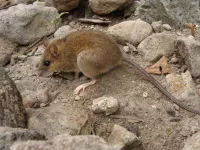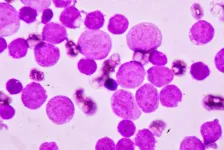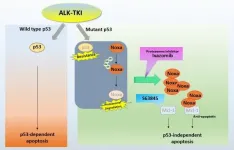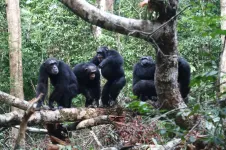INFORMATION:
Rediscovery of the 'extinct' Pinatubo volcano mouse
A small mouse rediscovered on a volcano that erupted 30 years ago provides hope for wildlife conservation in the Philippines
2021-01-22
(Press-News.org) In June 1991, Mount Pinatubo, a volcanic peak on the Philippine Island of Luzon, literally blew its top. It was the second-most powerful volcanic eruption of the 20th century, ten times stronger than Mount Saint Helens, and its effects were devastating. Lava and ash spewed into the surrounding environment in the Zambales Mountains, pooling in layers up to 600 feet thick in the valleys. Following the eruption, powerful typhoons and monsoon rains triggered landslides and ash flows that continued for many months. Eight hundred people lost their lives, and the lush forests that covered the mountain prior to the eruption were destroyed or severely damaged. In recent years, scientists returned to the region to survey the surviving mammal populations, and in a new paper in the Philippine Journal of Science, the team announced the rediscovery of a species of mouse that had long been feared to be extinct.
"When Pinatubo blew up, probably the last thing on anyone's mind was that a little species of mouse was thought to live only on that one mountain, and might well have become extinct as a result. What we've learned subsequently really blew us away", says Larry Heaney, the Negaunee Curator of Mammals at Chicago's Field Museum and one of the paper's authors.
In early 2011 and again in 2012, twenty years after the eruption, Field Museum researcher Danilo (Danny) Balete went to Mt. Pinatubo to study its mammal fauna. Over the course of several months, Balete and his team of field assistants (including local men from the Aeta tribe) surveyed the mammals on the mountain, from the bottom to near the top where the forest had been devastated by the eruption.
"Most of our field work on Luzon and elsewhere in the Philippines has been in natural forested habitats where mammals are most common" says Eric Rickart, Curator of Vertebrates at the Natural History Museum of Utah and lead author on the paper, "but Danny couldn't pass up an opportunity to see how mammals were faring on Mt. Pinatubo."
There were no surveys of the mammals on Mt. Pinatubo prior to the eruption. However, specimens housed in the US National Museum of Natural History provided some records from lower elevations around the mountain. "Most of these early records were for common species of bats collected in the 1950s," says Heaney, "but one specimen was particularly intriguing-a small rodent that became the type specimen, and only example, of a new species described in 1962 as Apomys sacobianus, the Pinatubo volcano mouse."
Conditions on Mt. Pinatubo were very harsh, and the survey work by Balete's team was both grueling and dangerous. Even after 20 years, evidence of the eruption was everywhere. The landscape was very unstable due to the constantly eroding ash and lahar deposits that made working in the steep terrain hazardous. It also greatly slowed the process of plant succession. Vegetation was a sparse mix of native and non-native plants, dense stands of grass (including bamboo), shrubs, low-growing vines, and few trees-all the characteristic of early stage second-growth habitat. It was a far cry from the old-growth tropical forest that covered the mountain before the eruption.
Field surveys of small non-flying mammals elsewhere on Luzon have revealed that old-growth forests contain a great variety of native species and few, if any, non-native "pest" species of rats. But in heavily disturbed second-growth habitats, particularly areas near croplands, the reverse is the case-non-native rats are most abundant, and there are only a few hardy native species. "We thought the work on Pinatubo would confirm this general pattern, so we expected to see few if any of the native species," says Rickart.
A specific motivation for the Pinatubo survey was to discover the fate of Apomys sacobianus, the Pinatubo volcano mouse. "After the eruption of Pinatubo, we looked for this mouse on other peaks in the Zambales Mountains but failed to find it," notes Heaney, "suggesting a very limited geographic distribution for the species. We thought the volcano might be the only place this mouse lived." And based on expectations from islands elsewhere, at the time it seemed possible that the species might have been lost because of the eruption.
However, the survey of Pinatubo produced some very surprising results-a total of 17 species were documented, including eight bats, seven rodents (five native and two non-native species), and even two large mammals (wild pig and deer). Contrary to expectations, non-native rats were not at all common and were restricted to areas near Aeta croplands where such agricultural pests are often most abundant. Despite the fact that all areas surveyed supported sparse, scrubby second-growth vegetation rather than forest, native rodents were abundant everywhere.
Most surprising of all, the most abundant species, overwhelmingly, was the volcano mouse Apomys sacobianus. Far from being wiped out by the eruption, this species was thriving in this greatly disturbed landscape along with other native species that also have a high tolerance for disturbance. "For some time, we've known that many of the small mammals of the Philippines can tolerate habitat disturbance, both natural and human-caused," Rickart says, "but most of them are geographically widespread, not locally endemic species which usually are viewed by conservation biologists as highly vulnerable."
As Mt. Pinatubo recovers from the damage done by the eruption, the forests will return and other species of mammals will move in. "Mt. Pinatubo could be a wonderful place to establish a long-term project to monitor habitat recovery and community re-assembly following the eruption," says Rickart, "such information would be helpful in efforts to regenerate the many areas that have been deforested by people."
After completing the Mt. Pinatubo mammal survey, Danny Balete returned to the Field Museum where he organized specimens and data from the survey, made some early notes for an eventual publication, and then set them aside to finish later. After he suddenly died in 2017 at age 56, Rickart and Heaney say that they picked up and completed the study as a tribute to Balete, who is now recognized as one of the most important figures in Philippine biodiversity science for his extensive research contributions, mentoring of younger colleagues, and promoting enjoyment of nature throughout the Philippines.
"Knowing that a species once thought to be vulnerable, even feared to be extinct, is actually thriving is the finest tribute to Danny that we can imagine," adds Heaney.
ELSE PRESS RELEASES FROM THIS DATE:
Massey researchers review geographic factors that affect HPV vaccination rates
2021-01-22
Human papillomavirus (HPV) is the most common sexually transmitted infection, with an estimated 79 million Americans currently infected with the virus, according to the Centers for Disease Control and Prevention. If a high-risk HPV infection does not go away, it can lead to the development of a variety of cancers, including 91% of all cervical cancers, 70% of oropharyngeal cancers and cancers of the vulva, vagina, penis and anus.
HPV vaccination can significantly reduce the number of new cancer diagnoses linked to the virus, in addition to preventing a number of other health complications.
"Given ...
New maintenance treatment for acute myeloid leukemia prolongs the lives of patients
2021-01-22
Patients with acute myeloid leukemia (AML), the most common form of acute leukemia in adults, that has gone into remission following initial chemotherapy remain in remission longer and have improved overall survival when they are given a pill form of the cancer drug azacitidine as a maintenance treatment, according to a randomized, international phase 3 clinical trial for which Weill Cornell Medicine and NewYork-Presbyterian are trial sites. This is the first time a maintenance treatment for AML has shown such a strong benefit for patients, and it is already being adopted as part of standard care.
The results, which were published Dec. 24 in the New England Journal of Medicine, led to the U.S. Food and Drug Administration's approval in September 2020 of oral ...
NIH-funded study examines mono, chronic fatigue syndrome in college students
2021-01-22
Many college students fully recover from infectious mononucleosis (which is almost always caused by Epstein-Barr virus) within 1-6 weeks, but some go on to develop chronic fatigue syndrome, also called myalgic encephalomyelitis (ME/CFS). A longitudinal study from DePaul University and Northwestern University followed 4,501 college students to examine risk factors that may trigger longer illness. The research appears in the journal Clinical Infectious Diseases and was funded by the National Institute of Allergy and Infectious Diseases.
Previous retrospective studies found that risk factors ...
Ageing dams pose growing threat: UN
2021-01-22
By 2050, most people on Earth will live downstream of tens of thousands of large dams built in the 20th century, many of them already operating at or beyond their design life, according to a UN University analysis.
The report, "Ageing water infrastructure: An emerging global risk," by UNU's Canadian-based Institute for Water, Environment and Health, says most of the 58,700 large dams worldwide were constructed between 1930 and 1970 with a design life of 50 to 100 years, adding that at 50 years a large concrete dam "would most probably begin to express signs of aging."
Ageing ...
Scientists improved eye tracking technology in VR systems
2021-01-22
The tracking of eye movement is one of the key elements of virtual and amplified reality technologies (VR/AR). A team from MSU together with a professor from RUDN University developed a mathematical model that helps accurately predict the next gaze fixation point and reduces the inaccuracy caused by blinking. The model would make VR/AR systems more realistic and sensitive to user actions. The results of the study were published in the SID Symposium Digest of Technical Papers.
Foveated rendering is a basic technology of VR systems. When a person looks at something, their gaze is focused on the so-called foveated region, and everything else is covered by peripheral vision. Therefore, a computer has to render the images in the ...
Depression in new fathers connected to relationship insecurities
2021-01-22
Becoming a parent often brings great joy, but not always. Parenthood also entails challenges, stress and, for some people, it can trigger depression. A new study from Lund University in Sweden shows that male postnatal depression is more common in men who are insecure in their relationship with their partner.
Depression affects around 10-12 per cent of new mothers, and at least 8 per cent of new fathers. The figures are even higher when looking at depressive symptoms; as many as one in five new fathers experience troublesome symptoms, according to the new study conducted by Elia Psouni, registered psychologist and associate professor of ...
Potential combined drug therapy for lung cancer
2021-01-22
Most lung cancers are of a type called non-small-cell lung carcinoma (NSCLC). This type of cancer is relatively insensitive to chemotherapy, so NSCLC therapies are usually based on drug treatment. Alectinib is a drug commonly used for treating patients with NSCLC. It addresses a gene rearrangement known as ALK that occurs in 3 to 5% of NSCLC patients (alectinib belongs to a class of drugs called ALK tyrosine kinase inhibitors). It has been unclear, however, whether there is a correlation between the use of alectinib and the poorer prognosis in ALK-NSCLC patients in which secondary cancer mutations ...
Single atoms as a catalyst: Surprising effects ensue
2021-01-22
Metals such as gold or platinum are often used as catalysts. In the catalytic converters of vehicles, for example, platinum nanoparticles convert poisonous carbon monoxide into non-toxic CO2. Because platinum and other catalytically active metals are expensive and rare, the nanoparticles involved have been made smaller and smaller over time.
"Single-atom" catalysts are the logical end point of this downsizing: The metal is no longer present as particles, but as individual atoms that are anchored on the surface of a cheaper support material. Individual atoms can no longer be described using the rules developed from larger pieces of metal, so the rules used to predict which metals will ...
A study explores the alteration of the functional dynamics of the human brain associated with ageing
2021-01-22
Normal ageing causes disruptions in the brain that can lead to cognitive decline. Resting-state functional magnetic resonance imaging studies have found significant age-related alterations in functional connectivity across various networks. However, most of the studies have focused primarily on static functional connectivity.
The authors of a recent study published in Cerebral Cortex based their research on the idea that studying the dynamics of resting-state brain activity across the whole-brain functional network can provide a better characterization of age-related changes.
The study was led by Gustavo Deco, director of the Center for Brain and Cognition (CBC) and ICREA research professor at the UPF Department of Information and Communication Technologies (DTIC), and Anira ...
Chimpanzee friends fight together to battle rivals
2021-01-22
Chimpanzees, one of the closest relatives of humans, cooperate on a group level - in combative disputes, they even cooperate with group members to whom they are not related. Those involved in fights with neighbouring groups put themselves at risk of serious injury or even death.
Within the context of the Tai Chimpanzee Project researchers observed three chimpanzee communities in Tai National Park in Cote d'Ivoire documenting social relationships, territory range and intergroup encounters amongst others. "We have been able to analyze almost 500 vocal and physical battles from the last 25 years with participation of at least one ...
LAST 30 PRESS RELEASES:
When is it time to jump? The boiling frog problem of AI use in physics education
Twitter data reveals partisan divide in understanding why pollen season's getting worse
AI is quick but risky for updating old software
Revolutionizing biosecurity: new multi-omics framework to transform invasive species management
From ancient herb to modern medicine: new review unveils the multi-targeted healing potential of Borago officinalis
Building a global scientific community: Biological Diversity Journal announces dual recruitment of Editorial Board and Youth Editorial Board members
Microbes that break down antibiotics help protect ecosystems under drug pollution
Smart biochar that remembers pollutants offers a new way to clean water and recycle biomass
Rice genes matter more than domestication in shaping plant microbiomes
Ticking time bomb: Some farmers report as many as 70 tick encounters over a 6-month period
Turning garden and crop waste into plastics
Scientists discover ‘platypus galaxies’ in the early universe
Seeing thyroid cancer in a new light: when AI meets label-free imaging in the operating room
Neutrophil-to-lymphocyte ratio may aid risk stratification in depressive disorder
2026 Seismological Society of America Annual Meeting
AI-powered ECG analysis offers promising path for early detection of chronic obstructive pulmonary disease, says Mount Sinai researchers
GIMM uncovers flaws in lab-grown heart cells and paves the way for improved treatments
Cracking the evolutionary code of sleep
Medications could help the aging brain cope with surgery, memory impairment
Back pain linked to worse sleep years later in men over 65, according to study
CDC urges ‘shared decision-making’ on some childhood vaccines; many unclear about what that means
New research finds that an ‘equal treatment’ approach to economic opportunity advertising can backfire
Researchers create shape-shifting, self-navigating microparticles
Science army mobilizes to map US soil microbiome
Researchers develop new tools to turn grain crops into biosensors
Do supervised consumption sites bring increased crime? Study suggests that’s a myth
New mass spec innovation could transform research
Maternal nativity, race, and ethnicity and infant mortality in the US
Migration-related trauma among asylum seekers exposed to the migrant protection protocols
Jupiter’s moon Europa has a seafloor that may be quiet and lifeless
[Press-News.org] Rediscovery of the 'extinct' Pinatubo volcano mouseA small mouse rediscovered on a volcano that erupted 30 years ago provides hope for wildlife conservation in the Philippines




